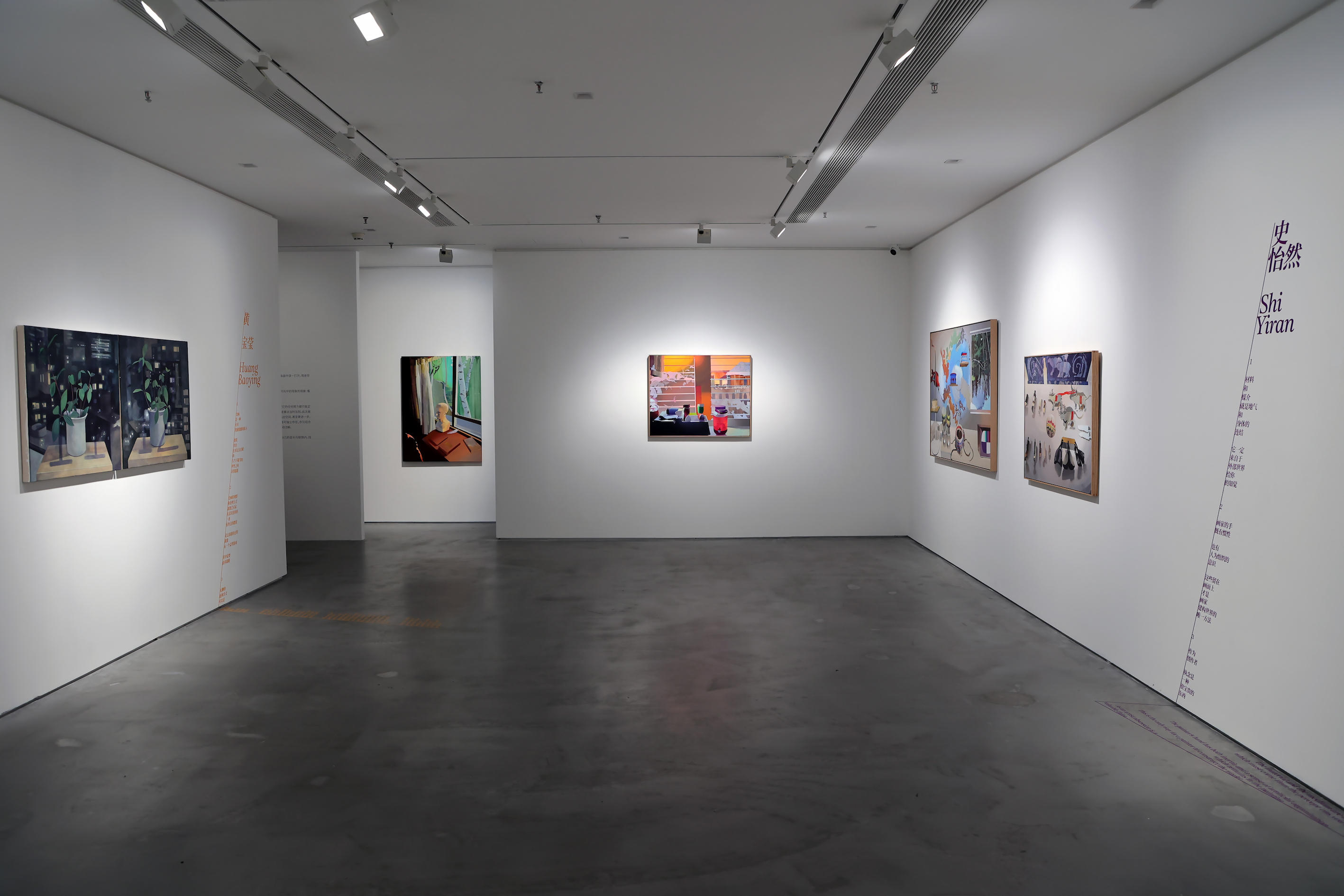Shows
Shi Yiran’s and Huang Baoying’s “Here and Then”

Shi Yiran and Huang Baoying: Here and Then
Ferris Gallery
Shenzhen
August 18–November 8
Life is a series of departures, whether voluntary or not. Some choose to embark on journeys that take them to new heights, while others are compelled to flee in a haze, leaving no trace. Alluding to this feeling of wanderlust, curator Ling Gu unveiled the exhibition “Here and Then” at Ferris Gallery in Shenzhen, showcasing the works of painters Shi Yiran and Huang Baoying. While each artist demonstrated a remarkable sensitivity to their present surroundings and distant homelands, their paintings also capture alienated and detached emotions, providing a glimpse into the psychological landscape of constant flight.
Shi is an Inner Mongolia-born, Hangzhou-based painter who often draws inspiration from Indigenous cultures for motifs and subjects. Her canvas works also often capture seemingly trivial moments reimagined from her travels. One such painting, Pan-Arctic Circle Anthropology Museum (2024), a collage of various tribal elements collected from Shi’s travels, depicts a white-walled museum room filled with diverse artifacts. Among them are handcrafted boots associated with the Evenki (a reindeer-herding Tungusic people based in the Siberia-Mongolia-China area), shamanic ritual drums, a scarlet macaw (a creature revered in South American mythology), and a retro Toshiba television often found in hunting camps that is switched on, but has no signal. At the center of the painted room is a map of the Arctic drawn on the wall, with each ethnic region marked in a distinct color. On the right is a window that opens to the Evenki hunting forest in the Greater Khingan Range. Perhaps for Shi, a peripatetic traveler herself, the appropriation of Amazonian motifs in an otherwise Arctic-themed canvas represents wishful thinking toward tribal camaraderie. This attempt to seek parallels between diverse native cultures, however, is effaced under her blocky paint strokes, confusing the message with cryptic convolutions.
SHI YIRAN, Pan-Arctic Anthropology Museum, 110 × 160cm, acrylic on wood panel. Courtesy the artist and Ferris Gallery, Shenzhen.
If Pan-Arctic Circle was meant to convey solidarity, Shi’s other work on display suggested the opposite, by lamenting cultural assimilation. In Bang! Bang! Bang! (2023), the artist depicts the Evenki people’s only remaining hunting camp, also in the Greater Khingan Range, as a dreary abstraction of color fields. Among the most recognizable motifs in the scene are the reflection of a revolver-shaped red neon-light bar sign within a murky puddle, abandoned hides dangling from an invisible taut rope, and a burning stove and logs left under a lonesome blue-gray tent. These elements all point to the gun-banning and relocation policy imposed against the Evenki by the Chinese government of Inner Mongolia in 2003. In this work Shi portrays the law’s aftermath: deprived of their means of livelihood and burdened with endless woes, the hunters of Shi’s painting turned to intoxication, as seen by the reflected bar sign. Vanished from the hunting site, the only traces of their existence remain on the artist’s canvas.
In contrast, Huang’s works for “Here and Then” deal with the concept of alienation through portrayals of still-life plants and household moments. As a New York-based, Shenzhen-born artist who has lived abroad for many years, her showcase of tropical plants thriving indoors reflects her private and enclosed universe. Her diptych A Long Goodbye (2024), for instance, captures a leafy plant perched on a table on the balcony, its silhouette illuminated by the New York City skyline. Two numbers, “11” and “12,” representing the room number “1112” of her previous residence, are subtly painted on top of the composition, serving as a shadowy reflection of the artist’s evolving emotions as she prepares to move into a new place. This inner expression is further explored in Repotting (2024), where the artist depicts the same plant, from her perspective, in a taxi. As she embarks on a relocation journey, the ghostly light shining onto the plant exudes an uneasy feeling.

HUANG BAOYING, The Long Goodbye, 2024, oil on canvas, each 76 × 76 cm. Courtesy the artist and Ferris Gallery, Shenzhen.
Huang’s work, unlike Shi’s, tends to favor a realistic expression, and her nuanced color palette evokes the changing hues of Claude Monet’s Rouen Cathedral series (c. 1890s). In Huang’s oil-on-linen painting Sure Love (2024), she meticulously portrays scattered hairs beneath a linen curtain decorated with ornate ebony fringe. The intricate palette of the crumpled fabric and the shadows that they shed on the wooden floor and windowsill are rendered with great detail. In Frosting on The Grid (2024), she broadens her color range, abstracting the winter frost into an image of mildew and dimness, mirroring her feelings of uncertainty while living abroad.
While “Here and Then” provided a small glimpse into how artists grapple with these alienated emotions, curator Ling Gu invited viewers to confront their inner selves by focusing on artists like Shi and Huang. In their attempts to capture ephemeral feelings, Shi brings our attention to the living conditions of Indigenous cultures, reminding us of the shared human experience of displacement and abandonment. Meanwhile, Huang scrutinizes minuscule details of everyday life through her careful gaze, evoking our sensitivity toward the transience of life. Within the exhibition, these often-suppressed emotions found outlets through the artists’ canvases.
Alex Yiu is associate editor at ArtAsiaPacific.







